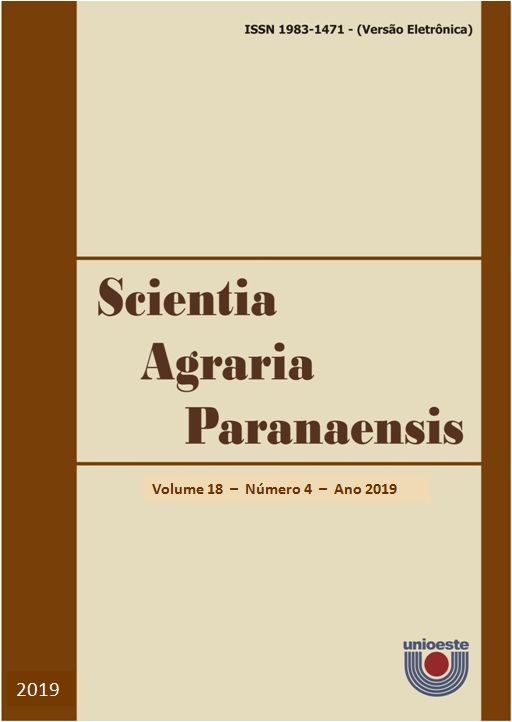Salicylic acid as a mitigator of water stress in black oats seeds
DOI:
https://doi.org/10.18188/sap.v18i4.22544Resumo
Oats are a very popular grass used in crop rotation to provide organic matter, green mass and assist in the natural aeration of the soil. Agronomic factors such as acidity correction and soil fertility adjustments can be controlled, but when it comes to climatic factors, cultivation depends on favorable climate conditions for good plant development. For instance, low rainfall occurrences result in decreased percentage of germination and plant development. Water stress affects plant development. Therefore, this study aimed to evaluate the effect of salicylic acid as a water stress mitigator on black oats. The experiment was carried out in the Laboratory of Molecular Biology and Biotechnology of Products and Microorganisms of the University of Parana. Black oats (Avena strigosa Schreb) seeds were submitted to different imbibition treatments: without imbibition, soaked in distilled water, and soaked in salicylic acid. Then, they were placed in gerbox boxes previously moistened with 6000 polyethylene glycol solution with different osmotic potentials (0.0; -0.2; -0.4; -0.6 and -0.8 MPa). The experiment was conducted in a completely randomized design with four replicates. Ten days after the experiment, the following parameters were evaluated: germination percentage, germination velocity index, shoot length and radicle length. Salicylic acid at the concentration used in this study promotes a mitigating effect of water stress caused by PEG6000, increasing the germination percentage of black oat seeds.
Downloads
Publicado
Como Citar
Edição
Seção
Licença
Aviso de Direito Autoral Creative Commons
Política para Periódicos de Acesso Livre
Autores que publicam nesta revista concordam com os seguintes termos:
1. Autores mantém os direitos autorais e concedem à revista o direito de primeira publicação, com o trabalho simultaneamente licenciado sob a Licença Creative Commons Attribution que permite o compartilhamento do trabalho com reconhecimento da autoria e publicação inicial nesta revista.2. Autores têm autorização para assumir contratos adicionais separadamente, para distribuição não-exclusiva da versão do trabalho publicada nesta revista (ex.: publicar em repositório institucional ou como capítulo de livro), com reconhecimento de autoria e publicação inicial nesta revista.
3. Autores têm permissão e são estimulados a publicar e distribuir seu trabalho online (ex.: em repositórios institucionais ou na sua página pessoal) a qualquer ponto antes ou durante o processo editorial, já que isso pode gerar alterações produtivas, bem como aumentar o impacto e a citação do trabalho publicado (Veja O Efeito do Acesso Livre).
Licença Creative Commons
Esta obra está licenciada com uma Licença Creative Commons Atribuição-NãoComercial-CompartilhaIgual 4.0 Internacional, o que permite compartilhar, copiar, distribuir, exibir, reproduzir, a totalidade ou partes desde que não tenha objetivo comercial e sejam citados os autores e a fonte.


